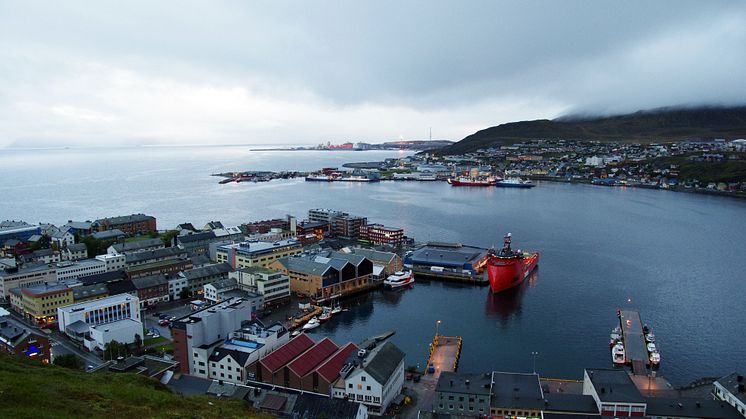
Press release -
Good performance at the Port State Control
ESVAGT has been classified ’high performing’ after unannounced vessel inspections.
ESVAGT does well at unannounced vessels inspections from the port authorities – the port state control, PSC.
The PSC divides vessels and shipping companies into various risk groups based on the deficiencies (see explanation of terms) they discover at their latest inspections. Over the last 36 months, ESVAGT has performed at a level deemed high performance, something with which Asger Stürtzel Sørensen, Fleet Manager – Operation, is very satisfied:
“As a shipping company with ambitions to deliver high quality shipping, we are pleased to be classified as high performing. It is the level that we aim for. This classification also defines how often a company is visited by the PSC. To be a ’high performer’, the shipping company must have two deficiencies fewer than the average of all shipping companies. When we are classified high performance, our vessels only need to be inspected every second or third year. That means that we save time when the vessels are in harbour and we can focus on other tasks related to vessel operations,” he says.
How often a PSC is carried out depends on both the performance of the shipping company and the individual inspection history of the vessel. Combined with being from a high performing shipping company, the vessel can have no more than five deficiencies in the last 36 months, regardless of how many onboard inspections have been carried out.
“In comparison with our six largest competitors, we perform at a very high level and are the only company that has been classified as high performer. If ESVAGT’s performance can be described as an index 100, then the next best has a performance index of 165 – and the poorest an index of 500,” says Asger Stürtzel Sørensen.
Own impartial inspection
A report of the deficiencies that ESVAGT has been noted for shows that the majority of – 63 percent – are administrative. It also shows that ESVAGT’s deficiencies are concentrated around a small number of vessels:
“There are six vessels with more than 5 deficiencies during the period. In all, these vessels account for 45 deficiencies out of the 65 in the entire ESVAGT fleet. Of these six vessels, three have since had inspections with zero deficiencies. The remaining three vessels are receiving increased support. For example, we have hired an impartial inspector to inspect the vessels with the crew to ensure that we raise the level,” says Asger Stürtzel Sørensen:
“It is important that we do not allow the classification to let us rest on our laurels. When we are at the level we now are, there are fewer inspections – and that makes us more vulnerable. The consequences of deficiencies from an inspection are greater when there are fewer inspections on which to spread out the average. We need to stay focussed so that we continue to deliver the standard that we want to. For us, the ’ESVAGT Standard’ means always trying to do things a little better,” concludes Asger Sørensen.
Facts
What is Paris MoU?
Port state control was established in 1982 as part of the Paris Memorandum of Understanding (Paris MoU); a common standard encompassing 26 European countries and Canada. The purpose is to monitor vessels inspections that ensure vessels live up to international conventions and working conditions for the seamen on board.
Since then, most seafaring countries in the rest of the world have entered into similar agreements - Tokyo MoU, Caribbean MoU, Riyadh MoU, etc.
Port state controls are not carried out in the country in which the vessel is registered.
Explanation of terms:
Deficiencies: PCS work with deficiency and detention. A deficiency is a deviation from a legal requirement, typically SOLAS. A detention is a deviation that is so severe that the port authorities detain the vessel.
Topics
Categories
ESVAGT is a dedicated provider of safety and support at sea, founded on an experienced and well-trained offshore crew and unmatched rescue capabilities.
We support the offshore Oil & Gas industries with a wide range of specialized services: Standby, Emergency Response and Resque Vessels (ERRV), Oil spill response, Firefighting, Tanker assists, Rig moves, Supply services and Interfield transfer of cargo and personnel.
In 2010, ESVAGT brought the dedicated offshore wind Service Operation Vessels (SOV) to the market. The SOVs provide accommodation for up to 40 technicians, storage for small turbine parts and a workshop, plus personnel and equipment transfer capabilities by either Walk-to-Work gangway system or Safe Transfer Boats.
ESVAGT was founded in 1981 and has a fleet of more than 40 vessels and more than 900 employees on- and offshore.

